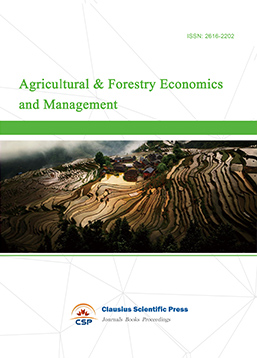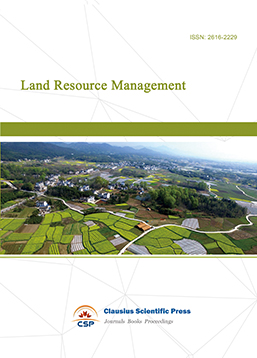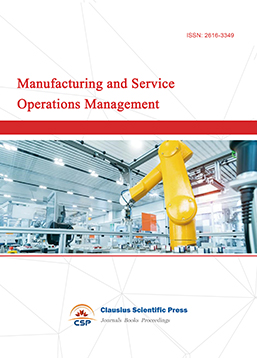A Multi-Objective Framework for Dairy Products Supply Chain Network with Benders Decomposition
DOI: 10.23977/ieim.2023.060509 | Downloads: 36 | Views: 1659
Author(s)
Safiye Turgay 1, Ozge Yasar 2, Abdulkadir Aydin 1
Affiliation(s)
1 Department of Industrial Engineering, Sakarya University, Sakarya, Turkey
2 Büyükdere Cad. No:110 P. K. 34394 Esentepe/Şişli İstanbul, Turkey
Corresponding Author
Safiye TurgayABSTRACT
In the food sector, it is necessary to maintain quality and products from the production of dairy products to the final supply point. It aims to minimize the objective function and level of presentation required for the product provided by the analysis of Benders decomposition. The model also includes different consumer demands for consumption decisions. In this study, with the Benders decomposition algorithm, it ensured that the quality level of the service delivered as soon as possible, the warehouses delivered from the factories and the remaining shelf life kept at the maximum level.
KEYWORDS
Supply Chain, Sustainable, Dairy Foods, Multi Objective Programming, Benders DecompositionCITE THIS PAPER
Safiye Turgay, Ozge Yasar, Abdulkadir Aydin, A Multi-Objective Framework for Dairy Products Supply Chain Network with Benders Decomposition. Industrial Engineering and Innovation Management (2023) Vol. 6: 78-88. DOI: http://dx.doi.org/10.23977/ieim.2023.060509.
REFERENCES
[1] Mogale D.G., Kumar M., Kumar S.K. & Tiwari M.K. (2018). Grain Silo location-allocation problem with dwell time for optimization of food grain supply chain network, Transportation Research Part E, 111, 40-69.
[2] Li Y., Chu F., Cote, J.F, Leandro C. C. & Chu C. (2020). The multi-plant perishable food production routing with packaging consideration, International Journal of Production Economics, 221, 107472.
[3] Alkaabneh F., Diabat A. & Gao H.O. (January 2020). Benders decomposition for the inventory vehicle routing problem with perishable products and environmental costs, Computers & Operations Research, 113, 104751.
[4] Davoodi S.M.R. & Goli A. (April 2019) An integrated disaster relief model based on covering tour using hybrid Benders decomposition and variable neighborhood search: Application in the Iranian context, Computers & Industrial Engineering, 130, 370-380.
[5] Kirilova E.G. & Vaklieva-Bancheva N.G. (2017). Environmently friendly management of dairy supply chain for designing a green products’ portfolio, Journal of Cleaner Production, 107, 493-504.
[6] Bottani E., Murion T., Schiavo M. & Akkerman R. (2019). Resilient food supply chain design: Modelling framework and metaheuristic solution approach, Computers & Industrial Engineering, 135,177-198.
[7] Pariazar M., Root S. & Sir M.Y. (2017). Supply chain design considering correlated failures and inspection in pharmaceutical and food supply chain, Computers & Industrial Engineering, 111, 123-138.
[8] Bilgen B. & Dogan K. (2015). Multistage Production Planning in the Dairy Industry: A Mixed Integer Programming Approach, Industrial & Engineering Chemistry Research, 54(46), 11709–11719.
[9] Egilmez G., Erenay B. & Süer G.A. (2019). Hybrid cellular manufacturing system design with cellularisation ratio: an integrated mixed integer nonlinear programming and discrete event simulation approach, International Journal of Services and Operations Management, 32, 1.
[10] Grillo H., Alemany M.M.E. & Ortiz A. (2017). FuertesMiquel, V.S. Mathematical modelling of the order-promising process for fruit supply chains considering the perishability and subtypes of products, Applied Mathematical Modelling, 49, 255-278.
[11] Paul S.K., Sarker R. & Essam D. (2017) A quantitative model for disruption mitigation in a supply chain, European Journal of Operational Research, 257, 881-895.
[12] Gholamian M.R. & Taghanzadeh A.H. (2017). Integrated network design of wheat supply chain: A real case of Iran, Computers and Electronics in Agriculture, 140, 139-147.
[13] Doganis P. & Sarimveis H. (2008). Mixed Integer Linear Programming Scheduling in the Food Industry. Optimization in Food Engineering, 80, (2), 445-453
[14] Mula J., Peidro D., DíazMadroñero M. & Vicens E. (2010). Mathematical programming models for supply chain production and transport planning, European Journal of Operational Research, 204(3), 377-390.
[15] Sel C., Bilgen B., Bloemhof-Ruwaard J.M. & Vorst J.G.A.J. van der (June 2015). Multi-bucket optimization for integrated planning and scheduling in the perishable dairy supply chain, Computers & Chemical Engineering, 77(9), 59-73.
[16] Bidhandi H.M., Yusuff R.M., Hamdan M.M., Ahmad H.M. & Abu Bakar M.R. (October 2009) Development of a new approach for deterministic supply chain network, European Journal of Operational Research, 198(1), 121-128.
[17] Shaw K., Irfan M., Shankar R. & Yadav S.S. ( 2016). Low carbon chance constrained supply chain network design problem: a Benders decomposition based approach, Computers & Industrial Engineering, 98 483–497.
[18] Mariel K. & Minner S. (April 2017) Benders decomposition for a strategic network design problem under NAFTA local content requirements, Omega, 68, 62-75.
[19] Hooker J.N. (2007). Planning and Scheduling by Logic-Based Benders Decomposition, Operations Research, 55, 3.
[20] Bidhandi H. & Patrick J. (January 2017). Accelerated sample average approximation method for two-stage stochastic prograamming with binary first-stage variables, Applied Mathematical Modelling, 41, Pages 582-595.
[21] Turgay S., Yaşar Ö., Tutar A.C., A Multi-objective Framework for Sustainable Dairy Products Supply Chain Distribution System Proceedings of 10th International Symposium on Intelligent Manufacturing and Service Systems Pages, 1481-1490. (2019).
| Downloads: | 27006 |
|---|---|
| Visits: | 812662 |
Sponsors, Associates, and Links
-
Information Systems and Economics

-
Accounting, Auditing and Finance

-
Tourism Management and Technology Economy

-
Journal of Computational and Financial Econometrics

-
Financial Engineering and Risk Management

-
Accounting and Corporate Management

-
Social Security and Administration Management

-
Population, Resources & Environmental Economics

-
Statistics & Quantitative Economics

-
Agricultural & Forestry Economics and Management

-
Social Medicine and Health Management

-
Land Resource Management

-
Information, Library and Archival Science

-
Journal of Human Resource Development

-
Manufacturing and Service Operations Management

-
Operational Research and Cybernetics


 Download as PDF
Download as PDF